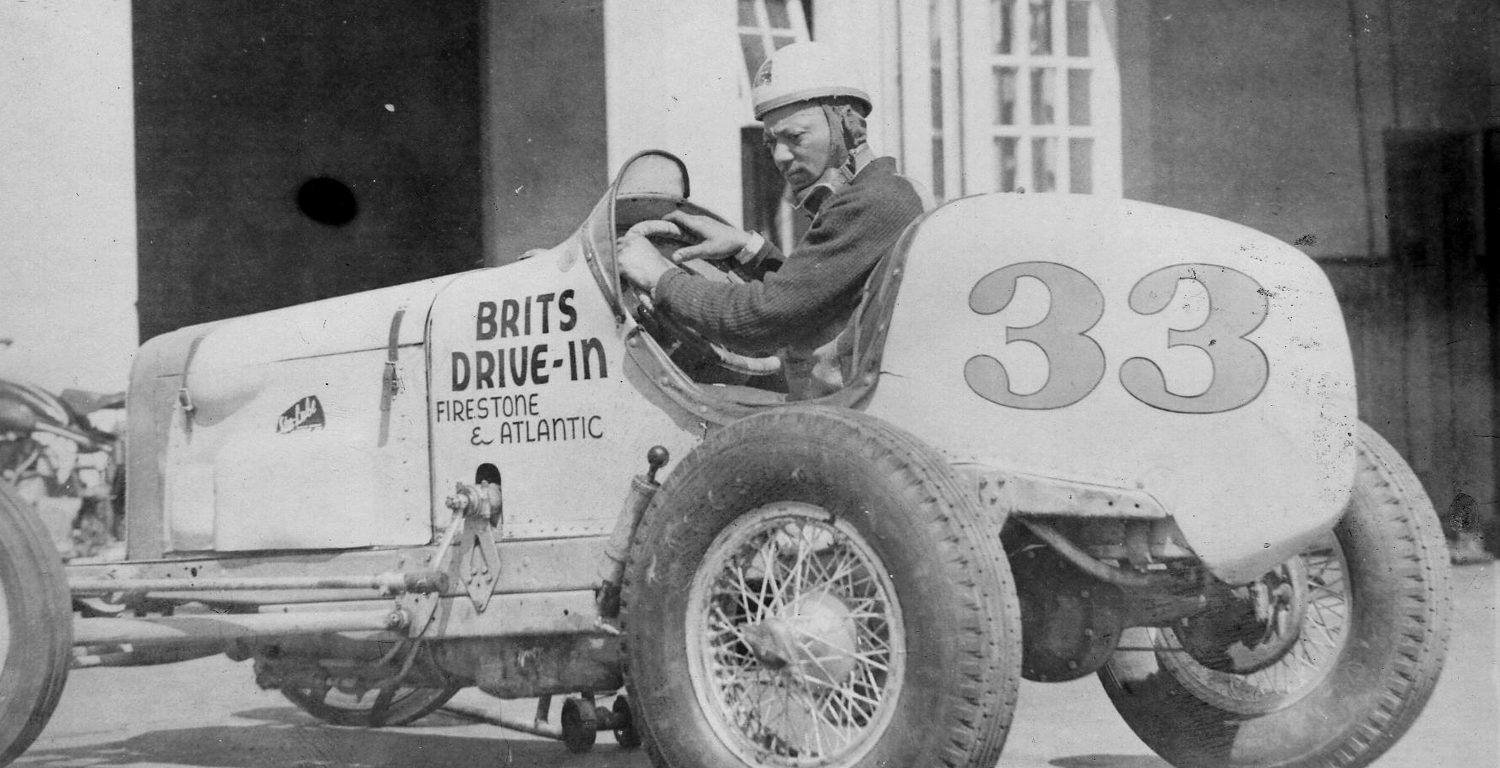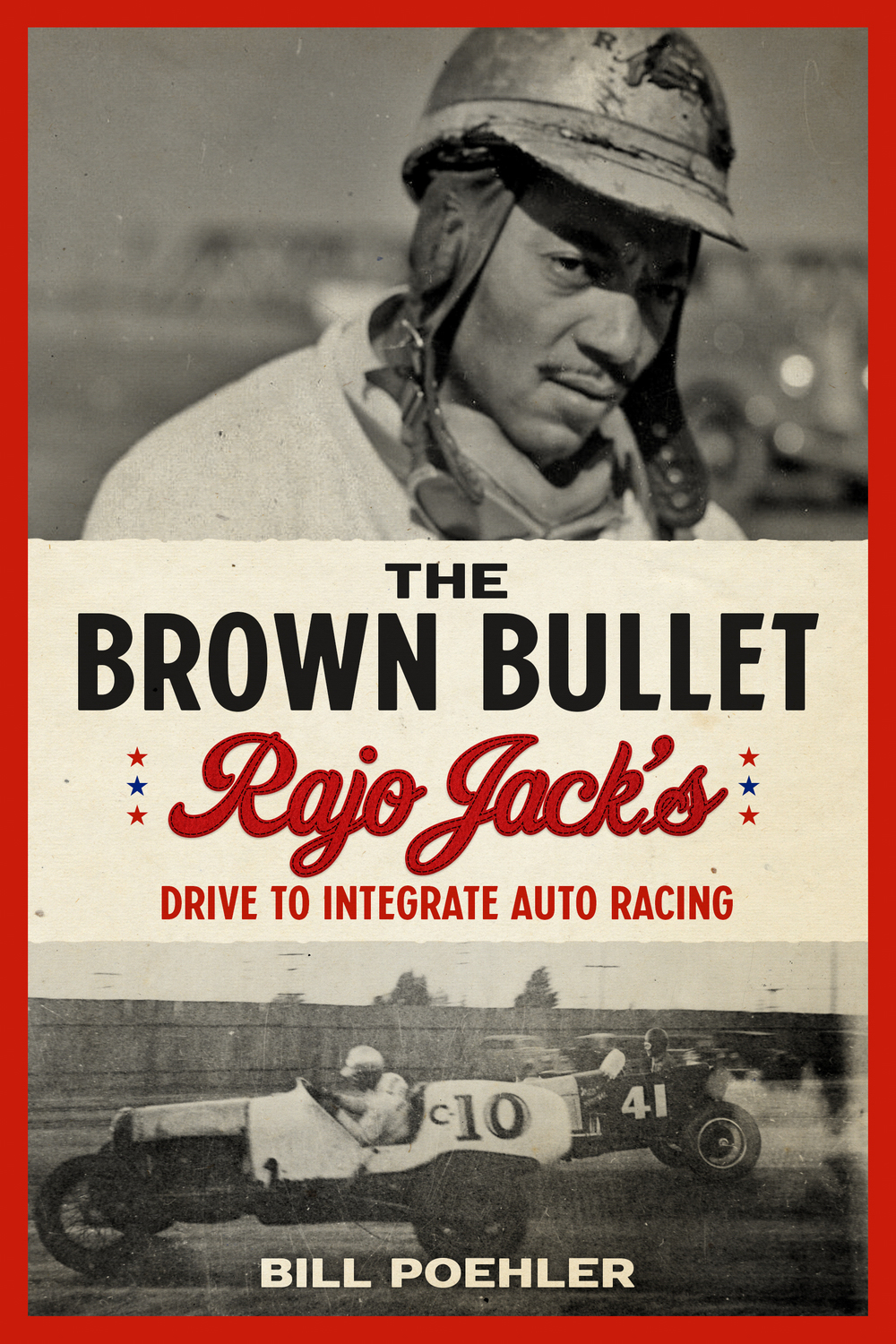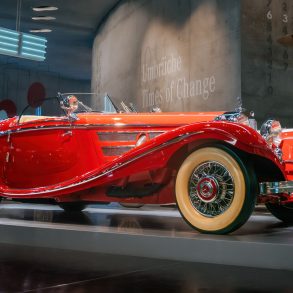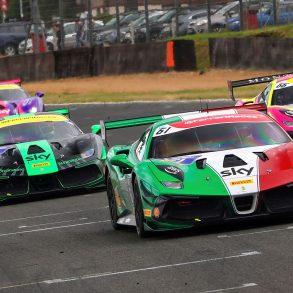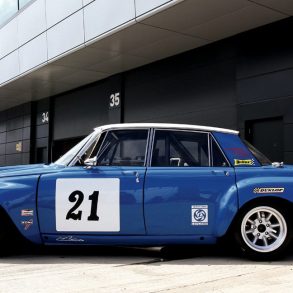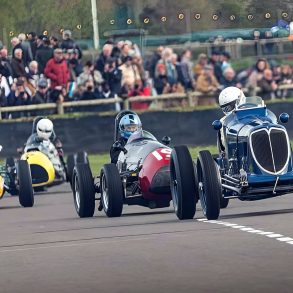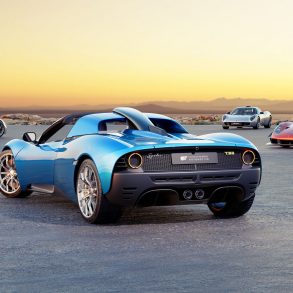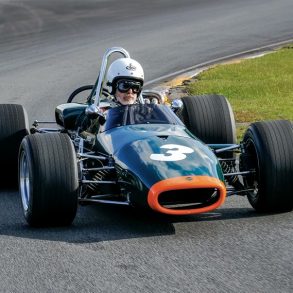The powers-that-be in 1920s auto racing, namely the American Automobile Association’s Contest Board, barred anyone who wasn’t a white male from the sport. But Dewey Gatson, a black man who went by the name “Rajo Jack”, drove into the center of “outlaw” auto racing in California, refusing to let the pervasive racism of his day stop him from competing against entire fields of white drivers. In the new book “The Brown Bullet”, journalist Bill Poehler uncovers the life of a long-forgotten trailblazer and the great lengths he took to even get on the track, showing ultimately how Rajo Jack proved to a generation that a black man could compete with some of the greatest white drivers of his era, winning some of the biggest races of the day. What follows is an excerpt highlighting a major turning point in the struggle of African-American drivers for equality on the track.
[dropcap]R[/dropcap]ace organizer Charlie Curryer set up a race he dubbed a stock car race, though it wasn’t under his American Racing Association banner. It was a stock car race in theory, but they were the same type of modified stock cars—sedans with fenders removed and stock engines—that had raced in the 1934 race at Mines Field and were still racing at Oakland Speedway. Curryer declared no manufacturer would be allowed to have more than four cars in the race because he didn’t want the Ford coupes to run away with the race and ruin the competition. And he rebranded the racetrack “Los Angeles Speedway,” as it sounded better than Mines Field.
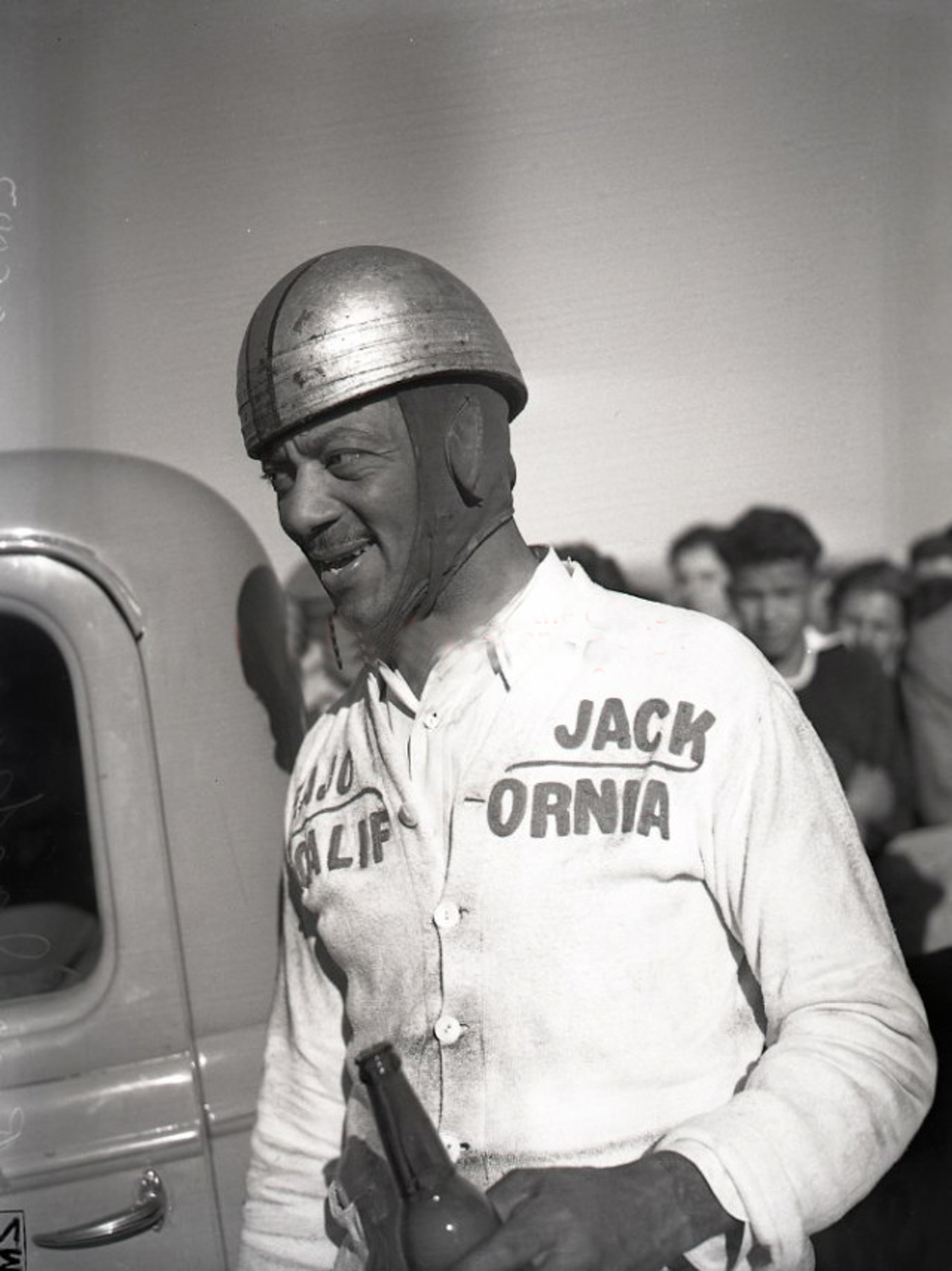
Once Curryer was involved, the first driver he booked was Rajo Jack.
Curryer’s finishing touch was to dub the race the National Road Race Championship, implicitly promising nationwide prestige to glory-hungry racers. He was justified, mostly because there were few road races in the United States in 1936. The race was scheduled for October 18 and a few sections of grandstands were erected around the course, which by then had been shortened to one mile and had a distinct B shape.
On the day of the race, torrential rain soaked the dirt runways, to the point where there was no chance of anyone completing a lap. After all the buildup to the race, the airport’s administrators took pity on Curryer’s attempt and granted him a date for the following weekend. But races that initially rain out rarely drew much of a crowd, so there was reason for pessimism.
Though it was a long course of one mile in length, the field was capped at twenty‑four cars for the race. Thirty-six entered. As the new October 25 race date loomed, the press named a few drivers as favorites. Bob McKenzie was feted as one of the finest road racers in America, though he was a relative unknown to the southern California crowd. Mel Keneally had given up his AAA standing and would race. Bud Rose had risen to the ranks of the best big car drivers on the coast. A promising upstart from the Bay Area, Fred Agabashian, signed up. And Duane Carter set fast time October 24 for the race.
Rajo Jack was not named as a favorite; like many other entrants, he had never raced on a road course. Even though he had become one of the hottest race car drivers on the West Coast, all Rajo knew was the consistent turns and terrain of dedicated racetracks, makeshift though they often were. The varied and winding route of a road course was completely new to him.
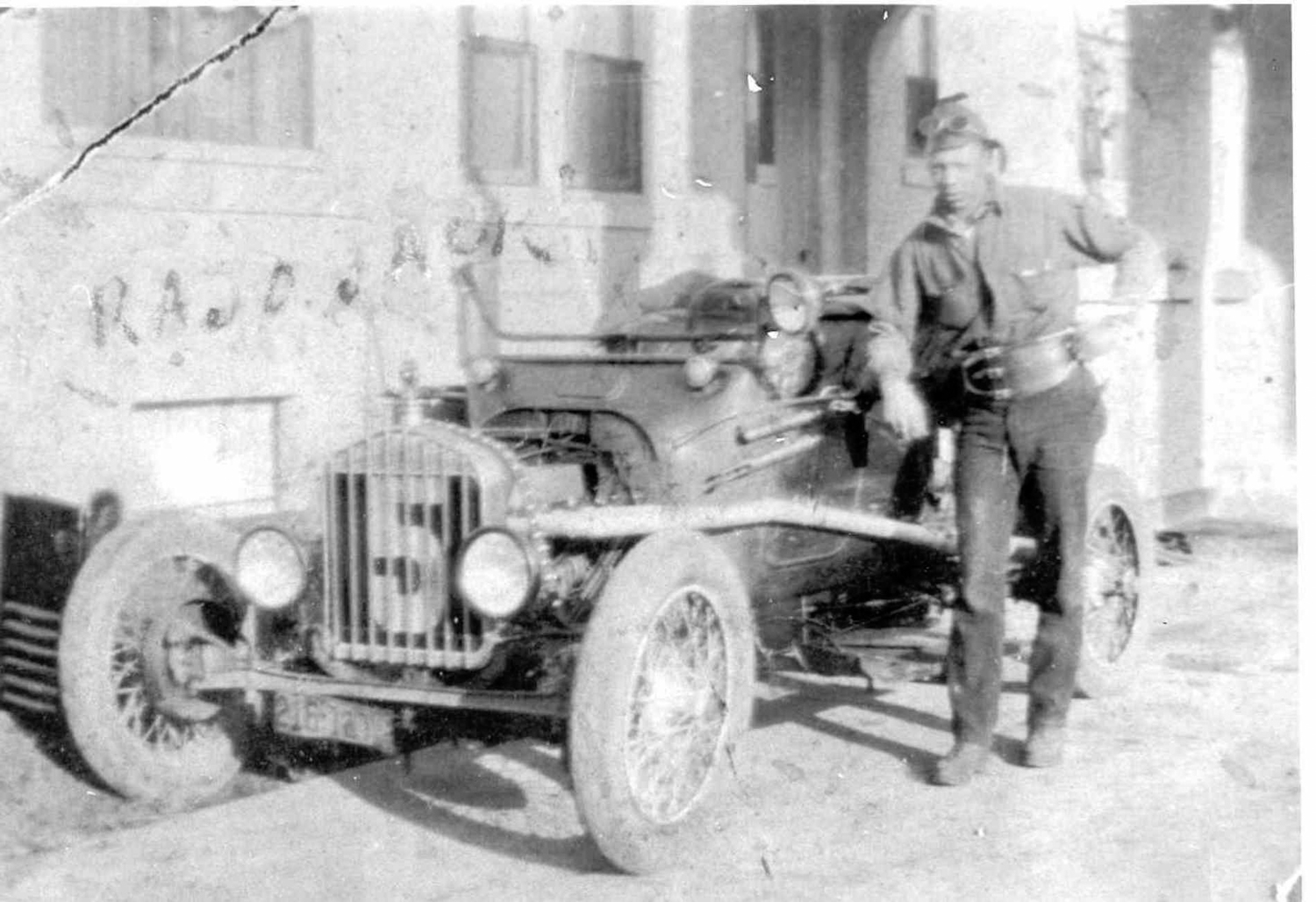
When the drivers first got on track at Mines Field under ominous skies at 10 am on October 24, what they found was a track still spongy, as it never had time to dry out. Qualifying was a disaster. Many of the cars, with stock components such as control arms, broke under the strain of the quickly rutting track. But Curryer issued a last‑minute warning to the drivers and pit crews about the necessity of stock parts and equipment.
The number 4 Ford Rajo Jack was driving was built with stock parts, or close enough, to not raise suspicion in tech inspection. Rajo’s trick was he had extra stock parts in the car.
Between fifteen thousand and twenty-five thousand fans filled the airport to watch the race—plenty to turn a profit—but with a track that large it was impossible to know exactly how many fans were on hand, as many figured out ways to sneak in without paying.
As the twenty-four cars rumbled to the start, Pat Cunningham—a regular racer in a midget at Gilmore Stadium—took the initial lead, but Rajo Jack was the only driver who could keep him in sight. Rajo gave everything trying to stay up with Cunningham, but Cunningham managed to stay in front with a lead between 75 and 150 yards through the first fifty-five laps. Cunningham’s car broke a spindle under the pounding on the fifty-sixth lap, handing Rajo Jack the lead.
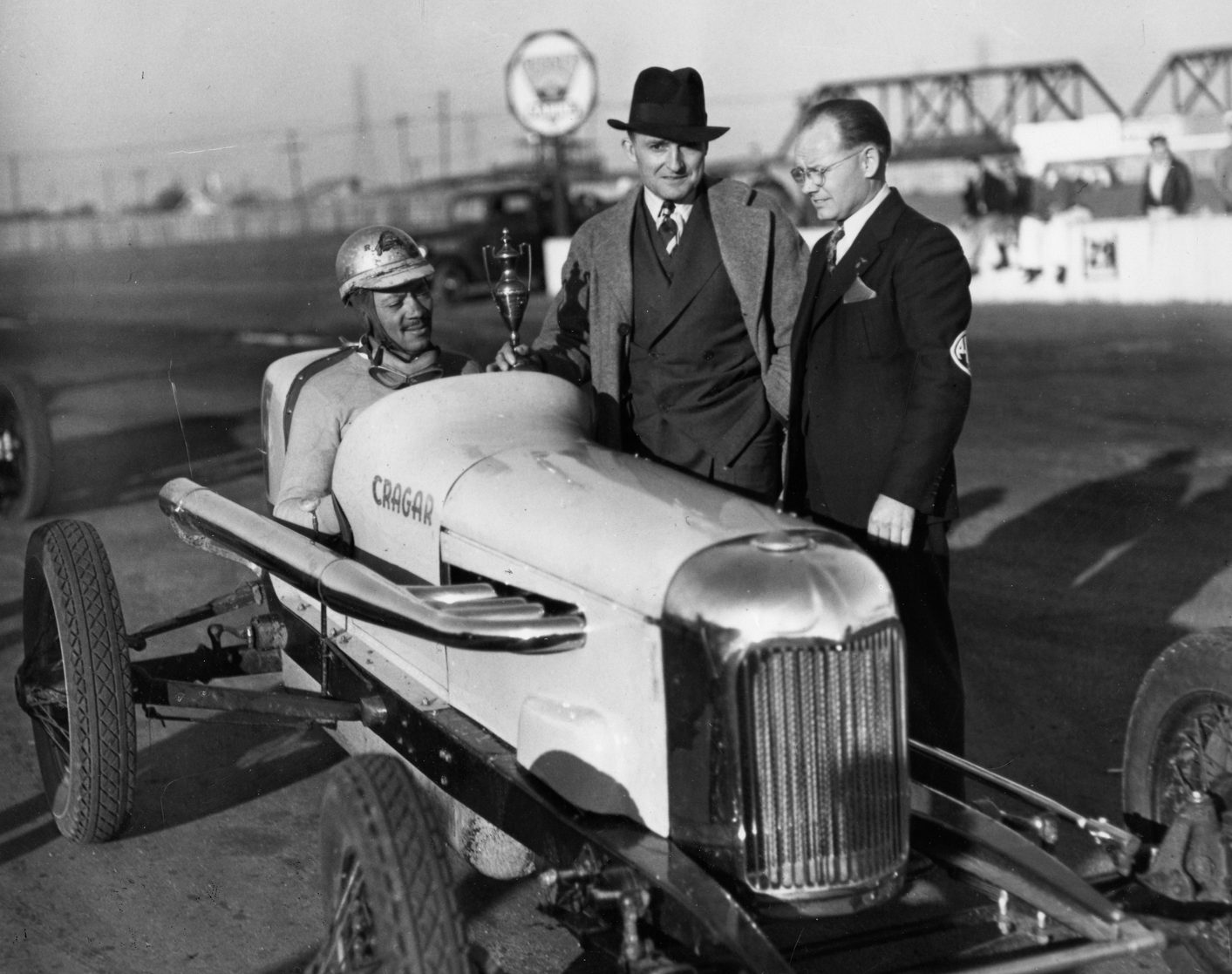
The track was brutal and many of the twenty-four cars that started broke at an astonishing rate—eleven of the starters would finish. Six drivers and mechanics—Vernon Wade, H. A. Walker, Walt Harris, Dee Tolan, and Henry Becker among them—were injured in wrecks and required trips to nearby hospitals. To make it worse, fog rolled in late in the race and softened the dirt with more moisture, denying it the chance to dry and harden. So many cars dropped out that Curryer made the call during the race to cut it down to 200 laps from 250.
It all allowed Rajo to easily build a two-lap lead. Many of the other cars pitted to fix mechanical problems or add fuel; Rajo never stopped. What the tech inspectors failed to realize before the race was the stock parts in his car included two stock gas tanks—one in the regular position under the car and a second mounted in the trunk.
Three hours, forty-seven minutes, and four seconds after he started the race, Rajo won the biggest race of his life, two laps in front of everyone else. The $1,500 winner’s check was the most money Rajo Jack had won in his thirty-one years.
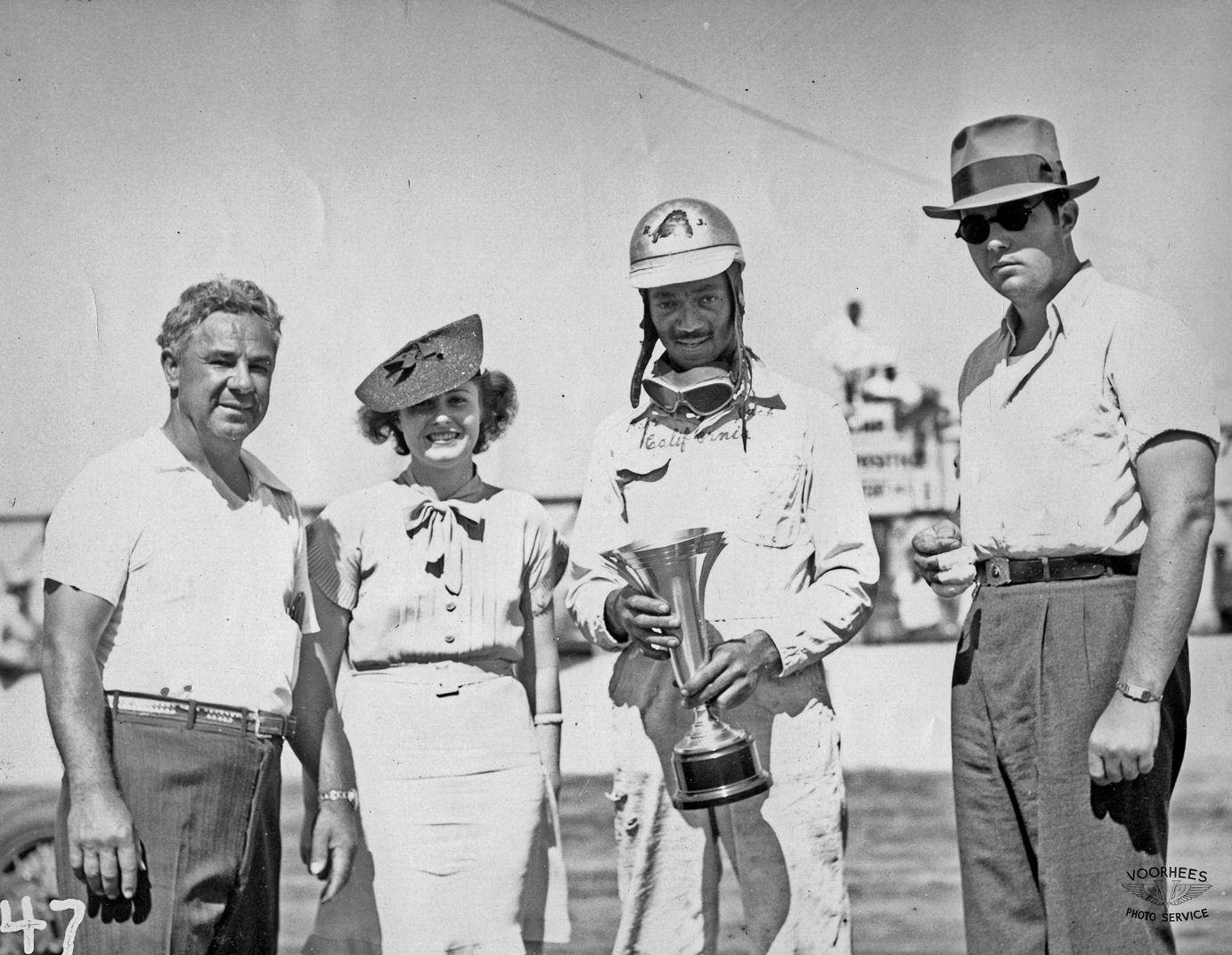
What happened next was something Curryer—and Rajo—never expected. The big newspapers around Los Angeles, including the Los Angeles Times, had reporters at the competition who described it as the biggest race of the year in Los Angeles, which was true. Once the wire services noticed that a black driver won a national championship race against white drivers, the story spread throughout the country. It was the first time a black race car driver had won a major race. It made for a compelling story line.
The story of Rajo Jack’s win made its way into nearly every newspaper in California, and into mainstream newspapers in Phoenix, St. Louis, Nevada, Pennsylvania, Milwaukee, and Indianapolis, as well as black newspapers in places like New York.
And every story noted Rajo Jack was black. The Indianapolis Star called him, “one of America’s foremost Negro race drivers.” The biggest compliment he got for his race was when he was described as “probably one of the outstanding Negro race drivers in the country and certainly tops in the west” in the St. Louis Post-Dispatch, the same newspaper that ignored him when he previously raced in St. Louis in 1932.
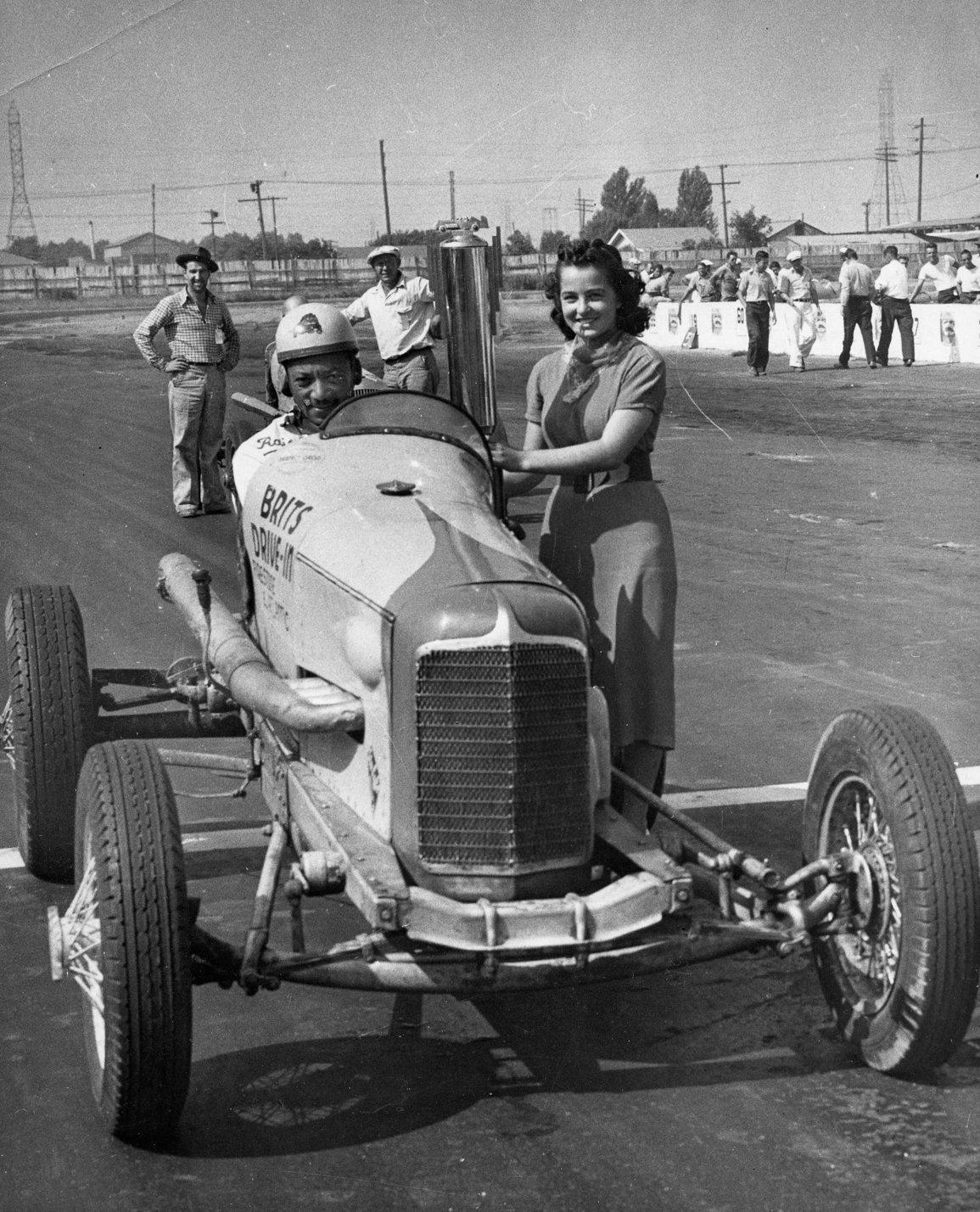
Rajo Jack was becoming one of the most well-known race car drivers in the United States.
Rajo Jack (with beer in hand) sits in his car after winning the 1936 two hundred-mile National Road Race Championship at Los Angeles Speedway on October 25, 1936, also known as the Mines Field airport. Charlie Curryer, in the white hat on the left, hands him a cigar. Ted Wilson photo, Bruce R. Craig Photograph Collection, Revs Institute
Over the following weeks, Rajo received letters and phone calls from his large group of friends in the racing community. To the racing elite, Rajo’s win was a joke; the competition was mediocre, and the cars were not real race cars. To those who read about the win from afar, he was a star.
And for the first time in his life, Rajo Jack was appreciated by the black community in Los Angeles. Entertainers who previously knew him in passing—like dancer Bill “Bojangles” Robinson and boxer “Baby” Joe Gans—sought him out and befriended him.
Without ever seeing him race, many in the black community of Los Angeles were convinced this black man was the greatest race car driver on the planet. Over the next few years, many in the entertainment community would tag along with him to races. Black actors who previously had no interest in racing were determined to see their new star in his sport. Never before had a black man made such a successful showing in auto racing, partly because people of his race were so discouraged from racing. In one race, Rajo proved a black man could accomplish what the white racing establishment had always fought to prevent.
Even the owners of White Sox Park wanted in. The baseball stadium had been converted back to its intended use. The owners wanted to honor Rajo for his win at a baseball game at the stadium between the black Royal Giants and the White Kings. They included him in a long list of black athletes they intended to fete at the game.
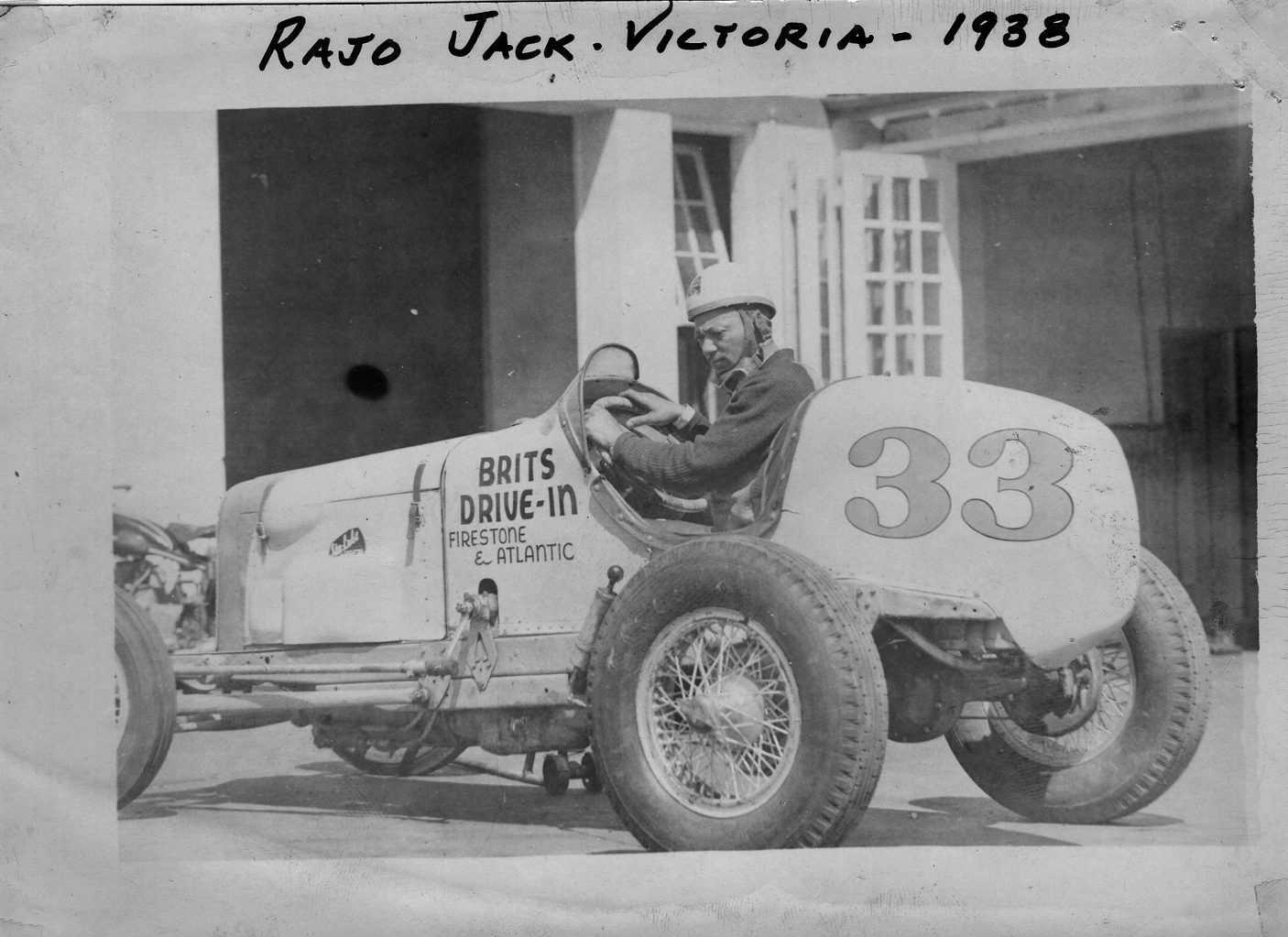
Rajo Jack had become such an instant celebrity that promoters were clamoring for him. He was supposedly entered in a big car race on November 1, at the reopening of the mile oval at Kenilworth Park in Petaluma, but Rajo was back in Los Angeles that day; Southern Speedway was holding a sixty-lap race for big cars, and Rajo chose to stay close to home. A big crowd turned out for the race, many drawn in by the pre-race publicity of Rajo racing. And he was fast. Running third with twenty laps to go, he tangled with second-place Hal Robson. The number C10, Alex Podurgiel–owned car Rajo was driving flipped, and he was thrown clear out of the car—Rajo considered seat belts dangerous, like most drivers of the day. He broke an ankle and got a few cuts and bruises but received a huge ovation from the appreciative crowd after crawling out from under the wreckage and onto the track.
Rajo appreciated the attention, but he hoped it would all be enough to convince the AAA he was worthy of being blessed with their approval— not that there were AAA races in California. After all the years of rejection by Art Pillsbury, Rajo tried to remain realistic.
But Rajo Jack soon learned that race car drivers can go from a nothing to a hero—and back just as quickly.
For more on the life and times of Rajo Jack, read Bill Poehler’s new book:
“The Brown Bullet: Rajo Jack’s Drive to Integrate Auto Racing” from Chicago Review Press.
Click here for more information or to order a copy.


